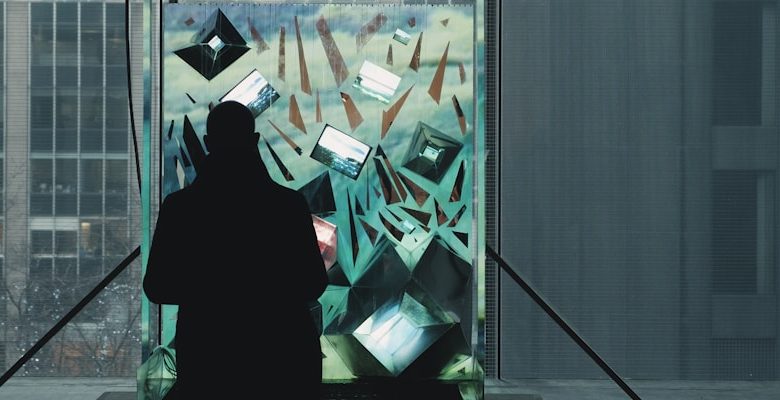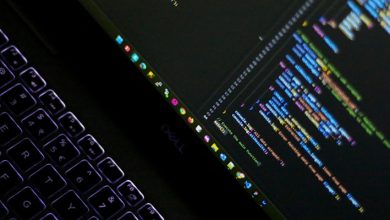The Future of Digital Art: Innovations in the NFT Space

- Introduction to NFTs and digital art
- Exploring the impact of blockchain technology on the art world
- Emerging trends in NFT marketplaces for digital art
- Challenges and opportunities for artists in the NFT space
- The intersection of digital art, NFTs, and virtual reality
- Predictions for the future of digital art in the NFT ecosystem
Introduction to NFTs and digital art
NFTs, or non-fungible tokens, have revolutionized the way we perceive and interact with digital art. These unique tokens are built on blockchain technology, ensuring that each piece of digital art is one-of-a-kind and cannot be replicated or forged. NFTs have opened up a whole new world of opportunities for artists, allowing them to sell their work directly to collectors without the need for intermediaries.
Exploring the impact of blockchain technology on the art world
Blockchain technology has been making waves in the art world, revolutionizing how digital art is bought, sold, and collected. The use of Non-Fungible Tokens (NFTs) on blockchain platforms has allowed artists to authenticate and monetize their digital creations in a way that was previously impossible. This innovation has opened up new opportunities for artists to reach a wider audience and gain recognition for their work in a secure and transparent manner.
Through blockchain technology, artists can create unique digital assets that are verifiable, indivisible, and tamper-proof. This has led to a surge in interest from collectors and investors who see the potential for digital art to hold long-term value. The decentralized nature of blockchain also eliminates the need for intermediaries, reducing transaction costs and ensuring that artists receive a fair share of the profits from their creations.
Furthermore, blockchain technology enables greater transparency in the art market, as each transaction is recorded on a public ledger that cannot be altered. This helps to prevent issues such as fraud and copyright infringement, giving artists more control over their intellectual property rights. As a result, the art world is experiencing a shift towards a more democratized and inclusive ecosystem, where artists of all backgrounds can thrive.
In conclusion, blockchain technology is having a significant impact on the art world, providing new opportunities for artists to showcase their talent and connect with a global audience. The use of NFTs has brought about a paradigm shift in how digital art is perceived and valued, paving the way for a more equitable and sustainable art market. As this technology continues to evolve, we can expect to see even more innovative applications that will shape the future of digital art for years to come.
Emerging trends in NFT marketplaces for digital art
In the rapidly evolving landscape of digital art, NFT marketplaces have emerged as a game-changer, revolutionizing the way artists create, sell, and collect digital artworks. These platforms provide a secure and transparent way for artists to tokenize their creations, allowing them to retain ownership and control over their work while reaching a global audience of collectors.
One of the key emerging trends in NFT marketplaces for digital art is the rise of curated collections. These curated collections bring together artworks around a specific theme or style, creating a cohesive and curated experience for collectors. By showcasing artworks in this way, NFT marketplaces are helping collectors discover new artists and expand their collections with pieces that resonate with them.
Another trend that is gaining traction in the NFT space is the integration of social features. NFT marketplaces are increasingly incorporating social elements such as chat forums, artist interviews, and virtual events to foster a sense of community among collectors and artists. This sense of community not only enhances the overall experience of buying and owning digital art but also creates a space for networking and collaboration within the industry.
Furthermore, NFT marketplaces are exploring new ways to enhance the utility of digital artworks through the use of blockchain technology. By leveraging smart contracts, artists can program certain functionalities into their NFTs, such as royalties for secondary sales or access to exclusive content. This not only adds value to the artwork but also ensures that artists are fairly compensated for their work as it changes hands in the secondary market.
Overall, the future of digital art in the NFT space is bright, with exciting innovations and trends shaping the way artists create and collectors engage with art. As NFT marketplaces continue to evolve and adapt to the needs of the community, we can expect to see even more groundbreaking developments in the intersection of art and technology.
Challenges and opportunities for artists in the NFT space
Being an artist in the NFT space comes with its own set of challenges and opportunities. One of the main challenges is the high level of competition, as more and more artists are entering the digital art market every day. This means that artists need to find ways to stand out and differentiate themselves from the crowd in order to attract buyers.
On the other hand, the NFT space also presents unique opportunities for artists to reach a global audience and monetize their work in new and innovative ways. By leveraging blockchain technology, artists can create scarcity and provenance for their digital creations, making them more valuable to collectors.
Another challenge for artists in the NFT space is the environmental impact of blockchain technology. The energy consumption required to mint and trade NFTs has come under scrutiny, leading some artists to seek out more sustainable alternatives.
Despite these challenges, the NFT space offers artists the chance to experiment with new forms of creativity and connect with a community of like-minded individuals. By embracing the opportunities presented by NFTs, artists can take their work to new heights and redefine the future of digital art.
The intersection of digital art, NFTs, and virtual reality
The intersection of digital art, NFTs, and virtual reality represents an exciting frontier in the world of creative expression. Artists are leveraging these technologies to push boundaries and explore new ways of engaging with audiences.
Through the use of blockchain technology, non-fungible tokens (NFTs) have revolutionized the art market by providing a secure and transparent way to buy and sell digital art. This has opened up a whole new world of possibilities for artists looking to monetize their work and reach a global audience.
Virtual reality (VR) adds another layer of immersion to the digital art experience, allowing viewers to step into a virtual gallery and interact with artworks in ways that were previously impossible. This technology blurs the lines between the physical and digital worlds, creating a truly unique and interactive art-viewing experience.
By combining digital art, NFTs, and virtual reality, artists are able to create innovative and dynamic pieces that challenge traditional notions of art and redefine the way we interact with creative content. This convergence of technologies is shaping the future of art, offering new opportunities for artists and collectors alike.
Predictions for the future of digital art in the NFT ecosystem
As we look ahead to the future of digital art in the NFT ecosystem, there are several key predictions that can be made based on current trends and developments. One of the most significant predictions is that the use of blockchain technology will continue to revolutionize the way digital art is created, bought, and sold. This technology provides a secure and transparent way to verify the authenticity and ownership of digital artworks, making it easier for artists to protect their intellectual property rights.
Another prediction is that we will see a rise in collaborations between digital artists and technologists, leading to the creation of innovative new art forms that push the boundaries of what is possible in the digital realm. These collaborations will likely result in the development of new tools and platforms that make it easier for artists to create and distribute their work, further democratizing the art world and giving more artists the opportunity to showcase their talents.
Additionally, we can expect to see an increase in the use of artificial intelligence and machine learning in the creation of digital art. These technologies have already been used to generate unique and compelling artworks, and as they continue to evolve, they will likely play an even larger role in shaping the future of digital art. This could lead to a blurring of the lines between human-created and AI-generated art, raising questions about the nature of creativity and authorship in the digital age.



